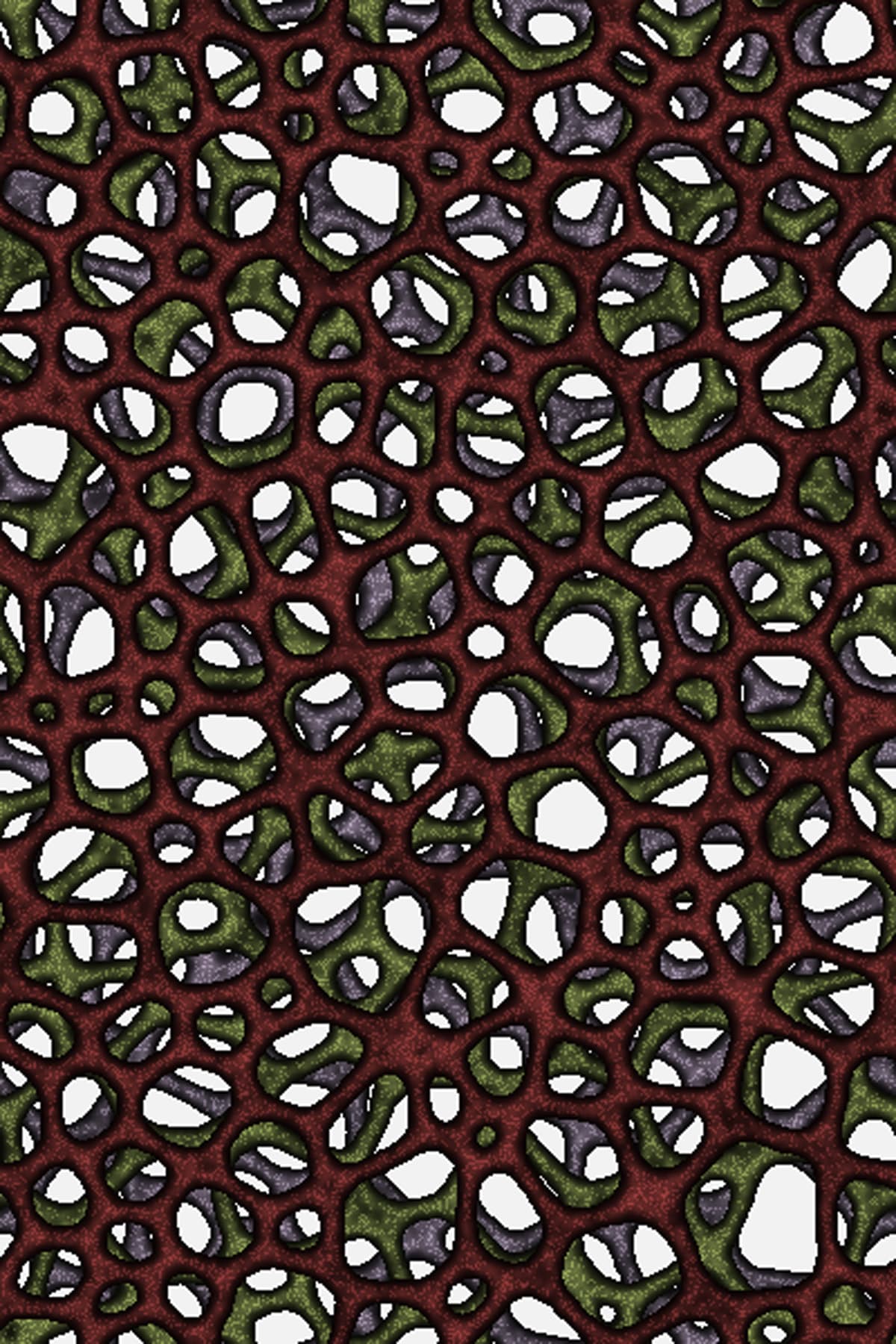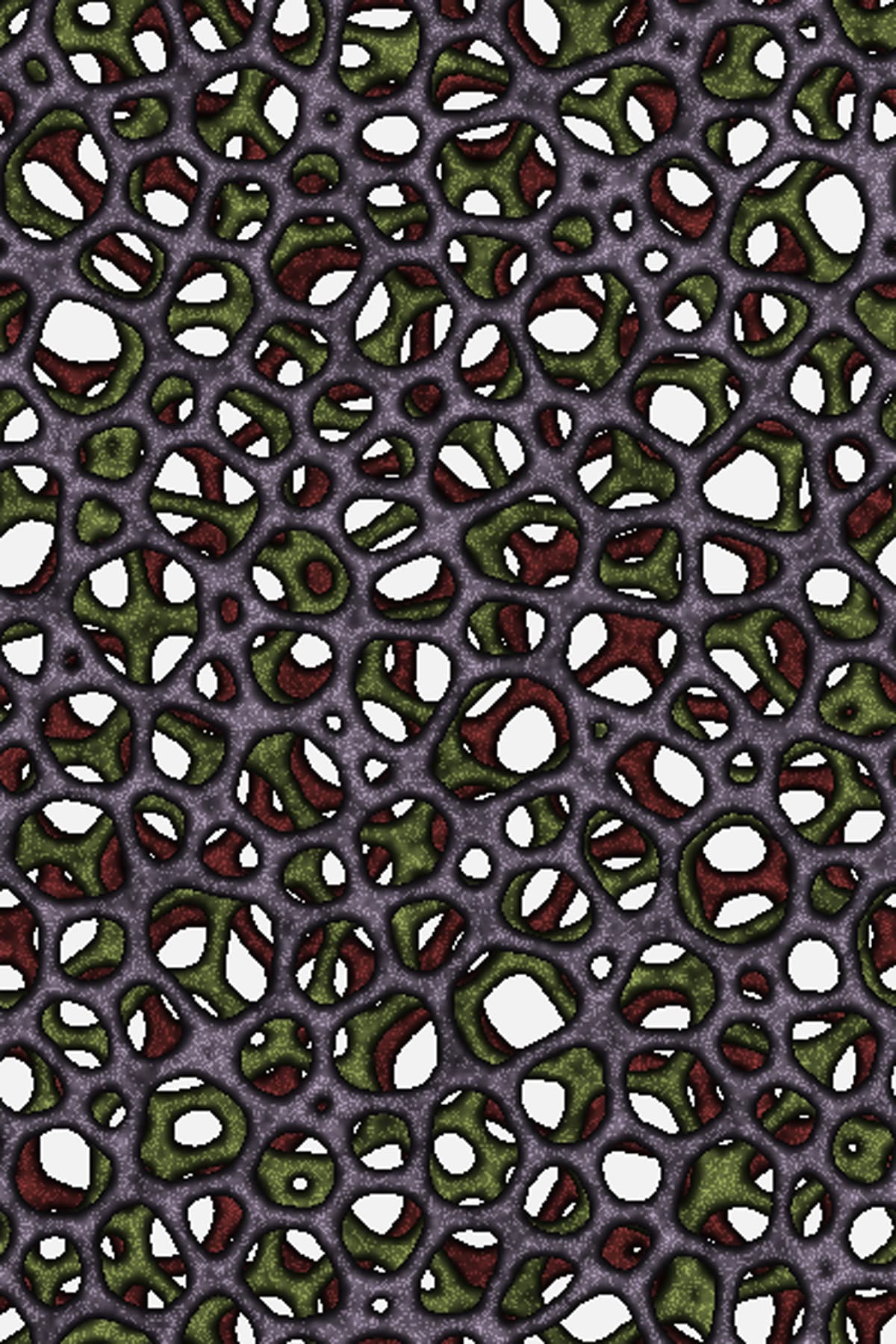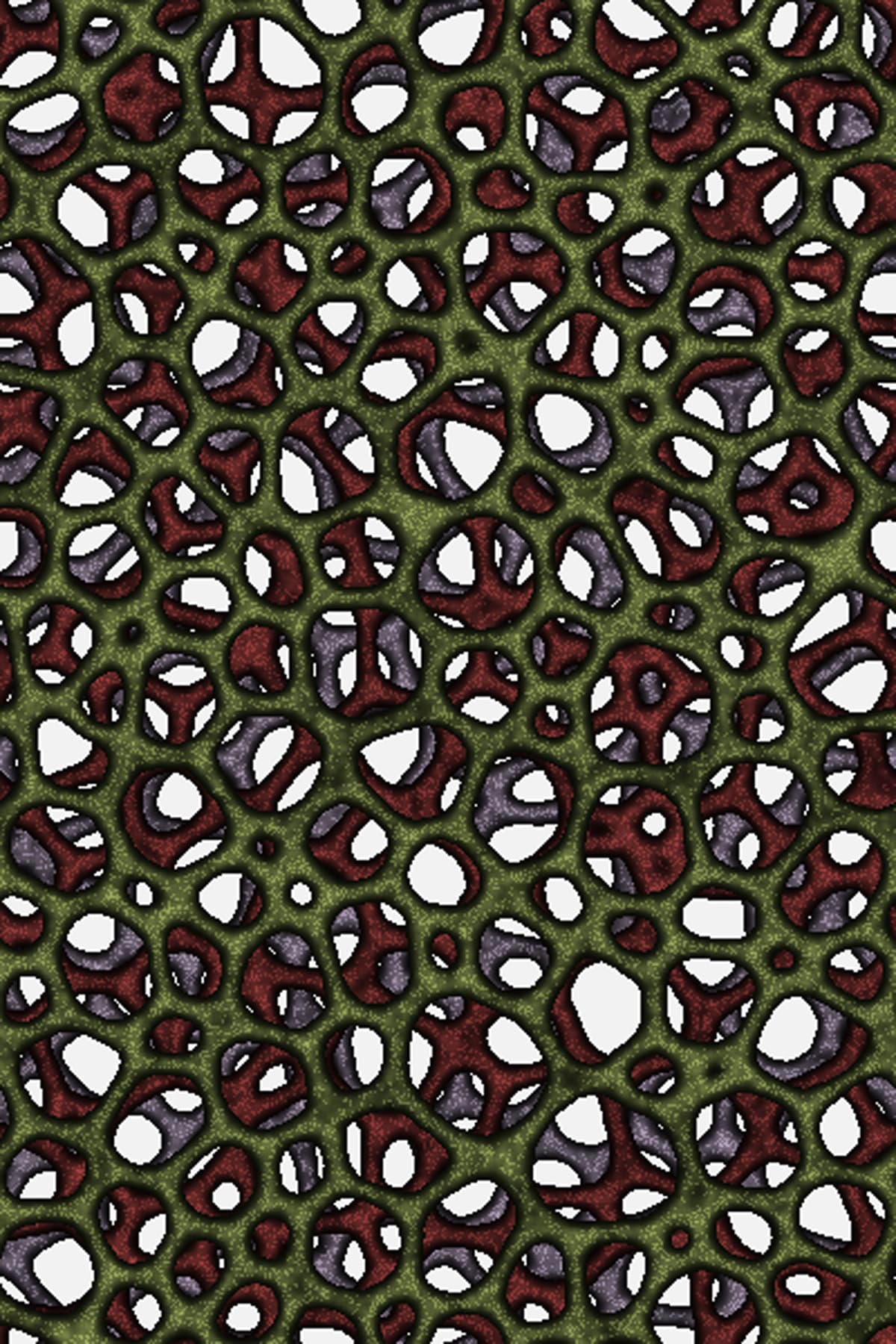Gary Greenfield
Artists
Gary Greenfield
Professor Emeritas of Mathematics & Computer Science
University of Richmond
Richmond, Virginia, USA
Statement
Many of my computer generated artworks are based on simulations that are inspired by mathematical models of physical and biological processes. In exploring the space of parameters that govern the simulation, I try to focus the viewer's attention on the complexity underlying such processes.
Artworks

Transport Network Overlay #15037
6" x 4"
Digital Print
2011
Each layer of these three-layer overlays is obtained by pseudocoloring the pheromone gradient pattern that emerges when thousands of vitrual ants roam over a toroidal grid. Here, pheromone is a virtual substance deposited by the virtual ants that diffuses and evaporates over time. The critical mechanism underlying these patterns is "remote sensing". In other words, a virtual ant's behavior is governed by pheremone concentrations it senses a considerable distance away from its curent location. This model was first introduced by Jeff Jones to simulate the formation of the transport networks of the slime mold Physarum.

Transport Network Overlay #9727
6" x 4"
Digital Print
2011
Each layer of these three-layer overlays is obtained by pseudocoloring the pheromone gradient pattern that emerges when thousands of vitrual ants roam over a toroidal grid. Here, pheromone is a virtual substance deposited by the virtual ants that diffuses and evaporates over time. The critical mechanism underlying these patterns is "remote sensing". In other words, a virtual ant's behavior is governed by pheremone concentrations it senses a considerable distance away from its curent location. This model was first introduced by Jeff Jones to simulate the formation of the transport networks of the slime mold Physarum.

Transport Network Overlay #531
6" x 4"
Digital Print
2011
Each layer of these three-layer overlays is obtained by pseudocoloring the pheromone gradient pattern that emerges when thousands of vitrual ants roam over a toroidal grid. Here, pheromone is a virtual substance deposited by the virtual ants that diffuses and evaporates over time. The critical mechanism underlying these patterns is "remote sensing". In other words, a virtual ant's behavior is governed by pheremone concentrations it senses a considerable distance away from its curent location. This model was first introduced by Jeff Jones to simulate the formation of the transport networks of the slime mold Physarum.